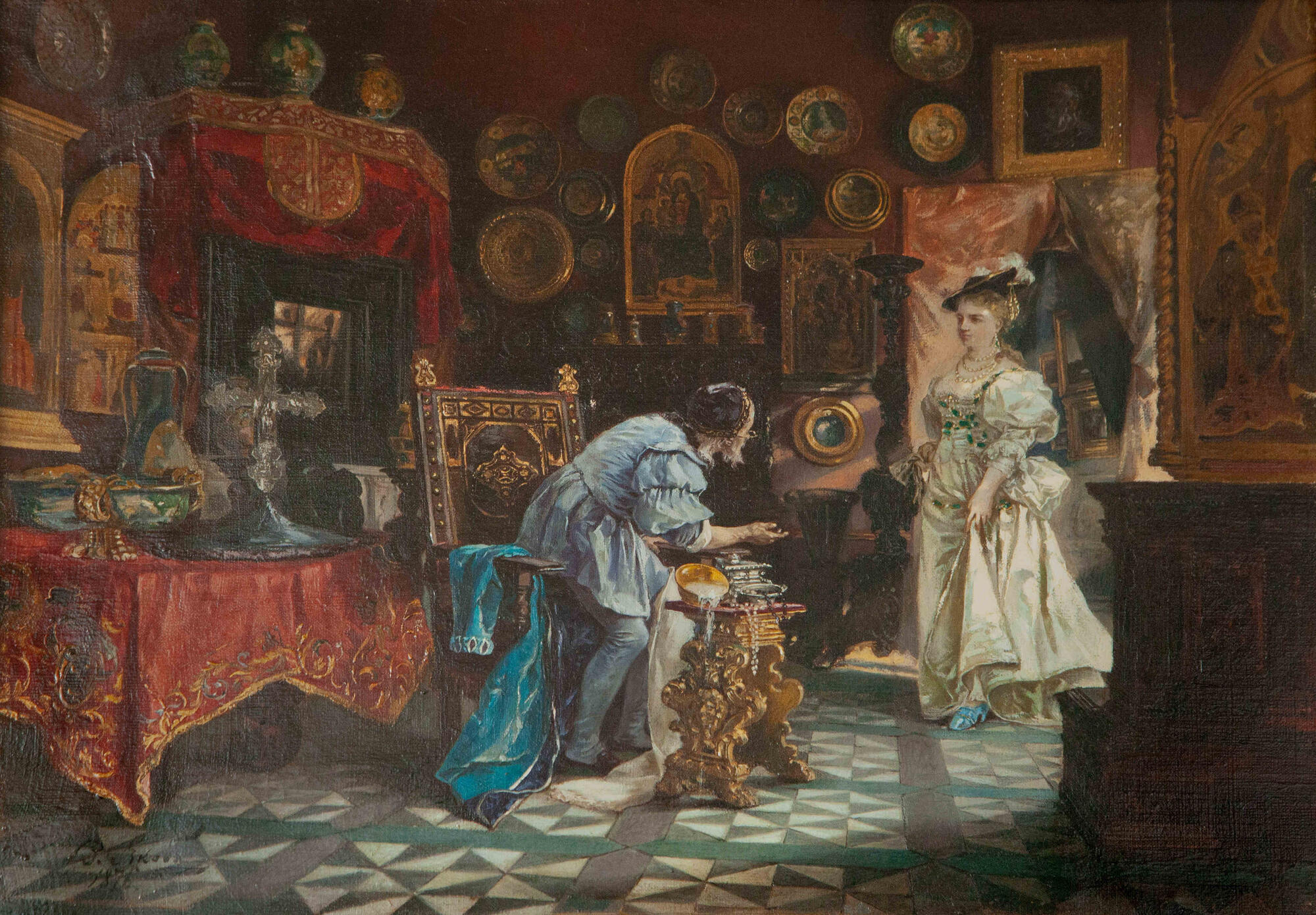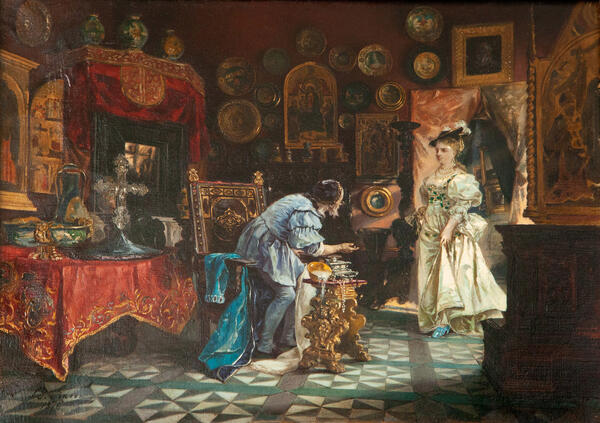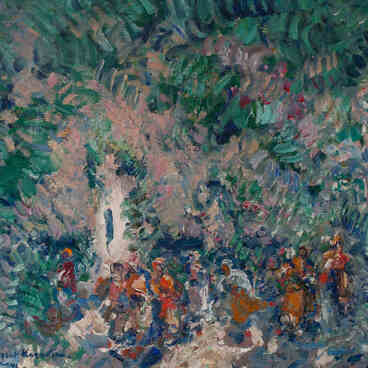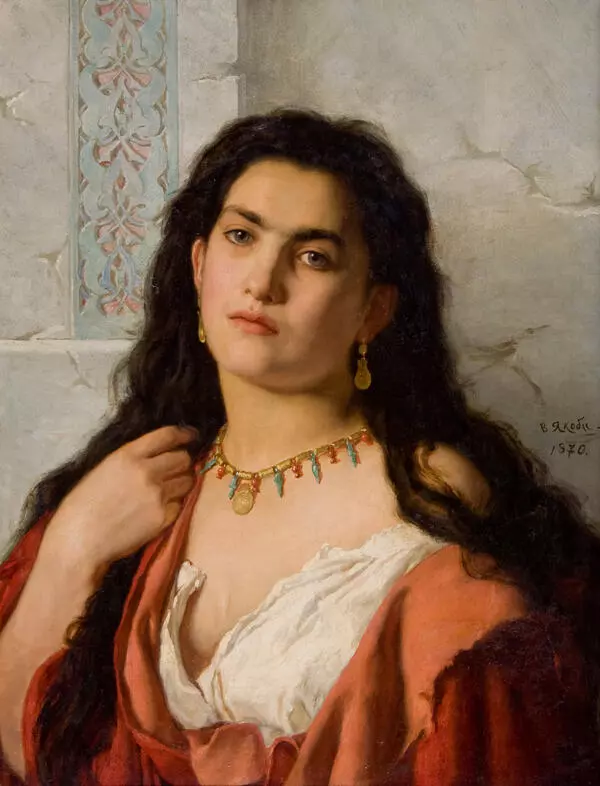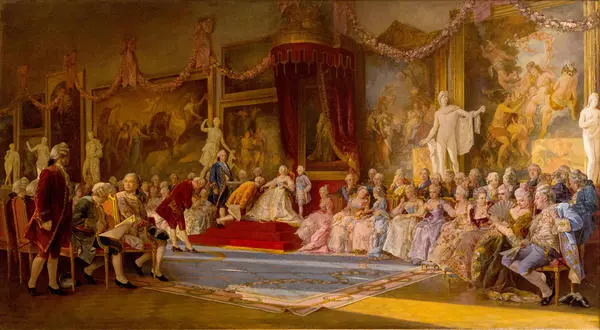Nikolai Golovanov’s collection contained only one work by the famous artist Valery Jacobi called “Antiquarian”. The conductor’s catalog listed the painting under the title “In the Antiquary Shop”, and Golovanov left a note in the catalog about this work, calling it “a magnificent canvas”.
Valery Ivanovich Jacobi (this surname might have been passed down from a distant ancestor — a physician that worked for Ivan the Terrible) was a Russian painter and a member of the Academy of Arts, known for his genre paintings and portraits. After he graduated in the 1860s, Jacobi went on a trip to Western Europe, sponsored by the Academy, and spent eight years there. During that time, in 1864, he created his most famous history painting “Ninth Thermidor (The Last Minutes of Robespierre’s Life)”. After he returned to Russia, the artist actively participated in establishing the Society for Traveling Art Exhibitions. Valery Jacobi’s most famous painting called “The Prisoner’s Rest” was created in 1861. With this work, Jacobi became the first Russian artist to address the issue of katorga labor camps. The picture made a huge impact on the public, who actively discussed matters related to the reforms introduced by Emperor Alexander II. A revolutionary convict, dying at the staging post, is depicted not as a fighter, as was customary in Russian art of subsequent years, but as a victim. This way of interpreting the theme of the liberation movement was characteristic of the artists of the 1860s.
In the 1870s, Jacobi moved away from critical realism and engaged in creating period, history paintings, that gravitated toward Academism. The most famous of them, entitled “The Ice House”, is housed in the Russian Museum in Saint Petersburg.
Art critics appreciated Jacobi’s works for their elegant costumes and striking narrative.
Valery Ivanovich Jacobi (this surname might have been passed down from a distant ancestor — a physician that worked for Ivan the Terrible) was a Russian painter and a member of the Academy of Arts, known for his genre paintings and portraits. After he graduated in the 1860s, Jacobi went on a trip to Western Europe, sponsored by the Academy, and spent eight years there. During that time, in 1864, he created his most famous history painting “Ninth Thermidor (The Last Minutes of Robespierre’s Life)”. After he returned to Russia, the artist actively participated in establishing the Society for Traveling Art Exhibitions. Valery Jacobi’s most famous painting called “The Prisoner’s Rest” was created in 1861. With this work, Jacobi became the first Russian artist to address the issue of katorga labor camps. The picture made a huge impact on the public, who actively discussed matters related to the reforms introduced by Emperor Alexander II. A revolutionary convict, dying at the staging post, is depicted not as a fighter, as was customary in Russian art of subsequent years, but as a victim. This way of interpreting the theme of the liberation movement was characteristic of the artists of the 1860s.
In the 1870s, Jacobi moved away from critical realism and engaged in creating period, history paintings, that gravitated toward Academism. The most famous of them, entitled “The Ice House”, is housed in the Russian Museum in Saint Petersburg.
Art critics appreciated Jacobi’s works for their elegant costumes and striking narrative.
